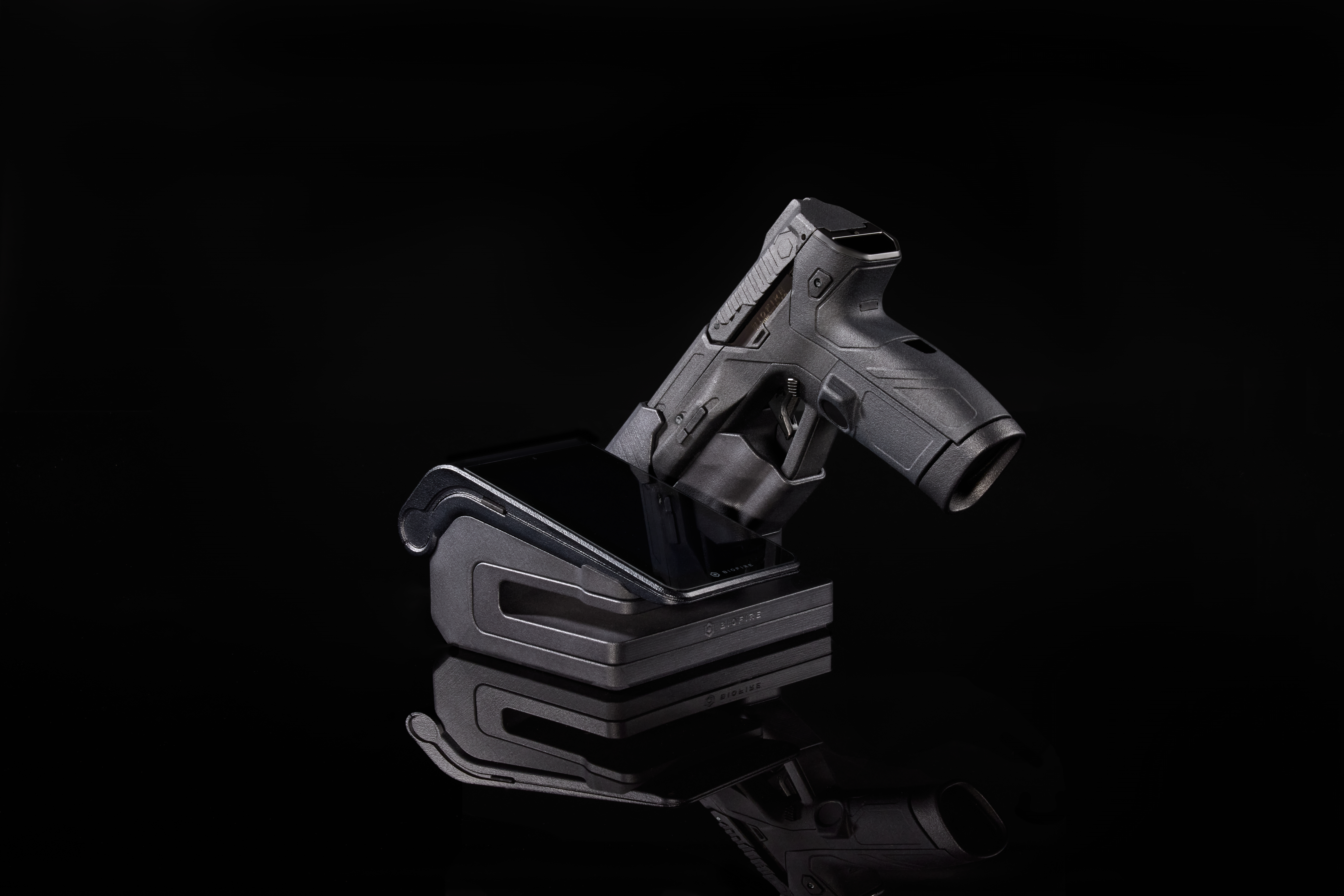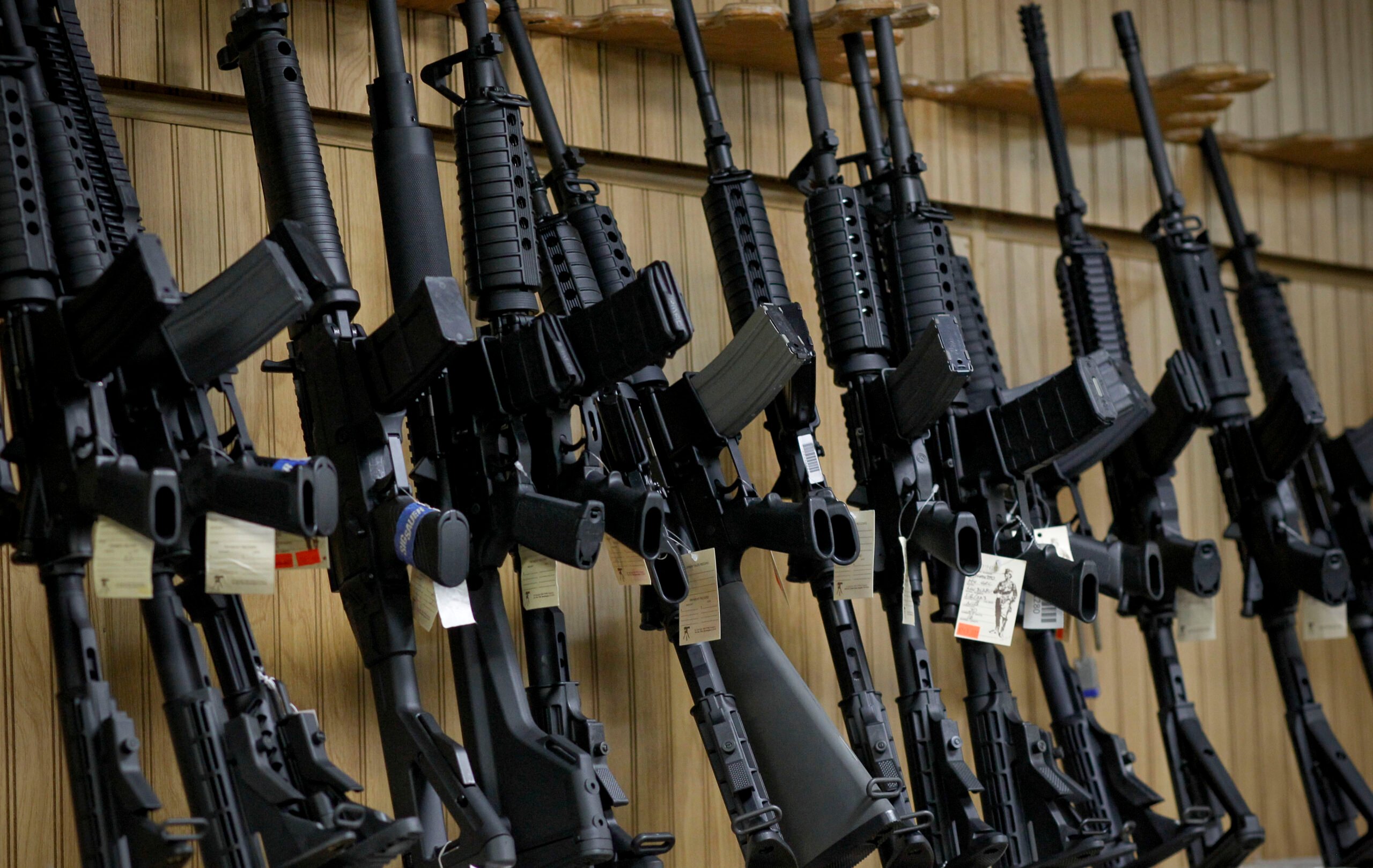The new smart gun from the firearms technology company Biofire is seemingly everything New Jersey State Senators Loretta Weinberg and Richard Codey envisioned when they authored the state’s Childproof Handgun Law in 2002. Equipped with facial recognition and fingerprint verification to ensure that only authorized users may handle it, the 9mm handgun became available for pre-order in April. Its “smart” features are designed to reduce accidental shootings by children, suicides, and the use of stolen guns in crimes.
But New Jersey’s law, which was toned down in 2019 but still requires all gun stores in the state to sell smart guns as soon as a viable option hits the market, may still not take effect. That’s partly because Biofire doesn’t want it to.
The company’s CEO, Kai Kloepfer, told The Trace he has no plans to submit his gun to New Jersey’s Personalized Handgun Authorization Commission for review, which might trigger the law’s requirement for gun sellers to stock it. No gun has yet been submitted for review, and the commission has not yet agreed upon technical criteria, but once a model is approved, it will need to be stocked by the state’s more than 300 gun stores.
“There is not a world where Biofire will be applying for inclusion,” Kloepfer said. “We do not support mandates of any kind. We’re looking to build positive long-term relationships with gun stores and forcing these additional administrative burdens doesn’t incentivize them to support our technology; it does the opposite.”
Since its inception, New Jersey’s law has been criticized by gunmakers and smart-gun advocates alike for stifling innovation and deterring would-be entrants to the smart-gun market. The bill originally forced firearms retailers to switch to entirely smart inventories within 30 months of a smart model being offered for sale anywhere in the United States — a measure that threatened to raze the firearms industry in New Jersey. The state Legislature dramatically softened this requirement in 2019, allowing retailers to carry their regular stock so long as they also offer at least one smart gun.
The revised statute now says that a “manufacturer or other entity” may apply for inclusion on the state’s roster of approved smart guns, but does not address whether the commission would be able to add firearms in the absence of an application. When asked about this possibility, a spokesperson for the New Jersey attorney general only repeated the language from the statute: “We cannot otherwise comment on the work PHAC is doing, or will do, to carry out its mandated mission.” Multiple requests for comment from members of the commission went unanswered.
Weinberg, who left the state Senate in 2021, said she was unsure whether the law would allow the commission to add guns to the roster without manufacturer consent, but said that she did not think the bill’s stocking requirement should concern smart-gun makers. “I would assume that [these manufacturers] would be more interested in developing a good product than worrying about whether the store is required to sell it,” she said.
Codey, who still represents Essex and Morris Counties in the state Senate, did not respond to requests for comment.
Weinberg and Codey conceived of their 2002 bill as a way to spur the “research, development, and manufacture” of smart-gun technology, Weinberg told NPR in 2014 — an attempt to address a crisis of accidental shootings, suicides, and homicides that involve lost or stolen guns. According to data from the Gun Violence Archive, almost 700 children are injured or killed in accidental shootings in the United States each year since 2015; roughly 25,000 die each year by firearm suicide. And as The Trace has reported, thousands of stolen guns every year turn up at the scenes of carjackings, sexual assaults, murders, and other crimes. Researchers and violence prevention advocates see smart guns as an effective and uncontroversial way to reduce such shootings.
But rather than facilitating the development of smart-gun technology, Weinberg and Codey’s law wound up thwarting it. The original requirement attracted furious blowback from gun rights organizations and Second Amendment activists, who rallied to block the release of products that would trigger the state’s countdown clock.
Their opposition mired discussion of the technology in hot-blooded political muck. For nearly two decades, no smart guns made it to market in the U.S., and no major firearms manufacturer dared explore the technology. When a German company introduced a model controlled by a radio frequency identification chip in a companion watch, the two U.S. gun stores that announced plans to carry the weapon faced boycotts and death threats. (The gun, the iP1 from the gunmaker Armatix, was also an unmitigated failure: its RFID-controlled safety could be disabled with magnets).
Weinberg recognized the legislation’s shortcomings, and campaigned for years to have it altered. She authored the bill’s partial repeal in 2019, and in the process gave responsibility for working out the details to a new commission — the PHAC.
But nearly four years later, the PHAC has yet to formalize criteria for guns to qualify for inclusion on the state’s roster. Members — including a pediatric emergency care doctor, the inventor of a biometric gun lock, and a lieutenant with the New Jersey State Police — began meeting only in 2022, minutes published to the attorney general’s website show. Meanwhile, questions abound about how the law’s stocking requirement might actually be enforced.
Whether the Biofire gun is authorized by the PHAC or not, Kloepfer told The Trace that the company is years from possessing the necessary production capacity to fulfill wholesale orders. For the time being, Biofire is only accepting orders through its website, and expects to begin shipping guns in the first half of 2024.
Margot Hirsch, president of the Smart Tech Challenges Foundation, a nonprofit organization that supports technological innovations to help reduce gun violence, said that her organization does not support the New Jersey mandate, and believes that even in its current form, the law has presented obstacles to the development of smart-gun technology. “This bill was well-intentioned, but it didn’t work, and they didn’t learn their lesson,” she said. “And now this commission is setting technological standards for smart guns without the input of any true subject matter experts. To me, that borders on irresponsible.”
Weinberg told The Trace that the requirement in the original bill was an attempt to encourage the market for smart guns in the midst of what she viewed as the gun industry’s resistance to the technology, and compared it to laws mandating seatbelts or airbags in cars. She disagreed that the newer version of the law would have a chilling effect on smart-gun production, saying, “There is nothing here that should preclude people from doing research and development.”
Correction: A photo caption in an earlier version of this article misstated where the smart gun manufacturer Biofire is based.

